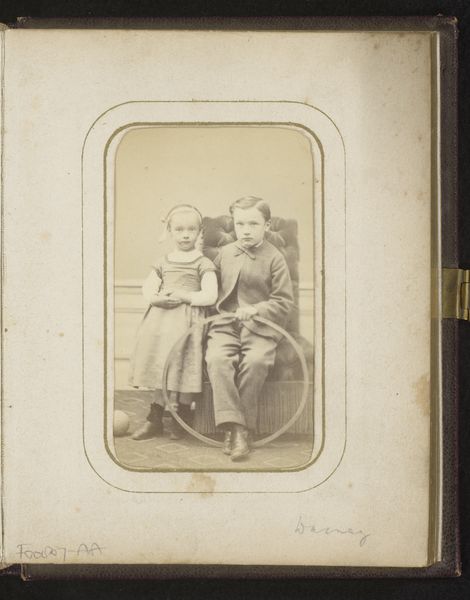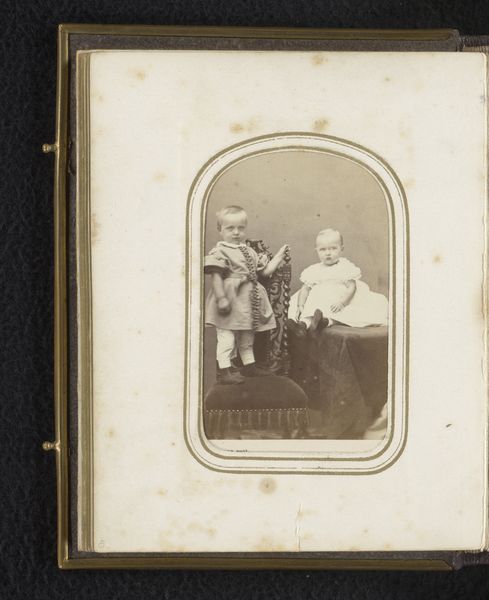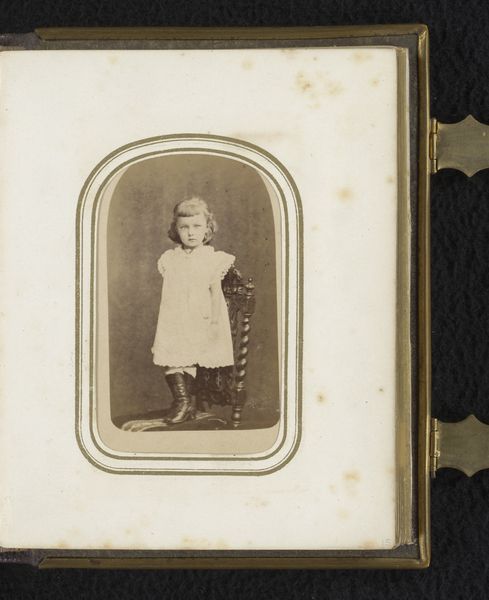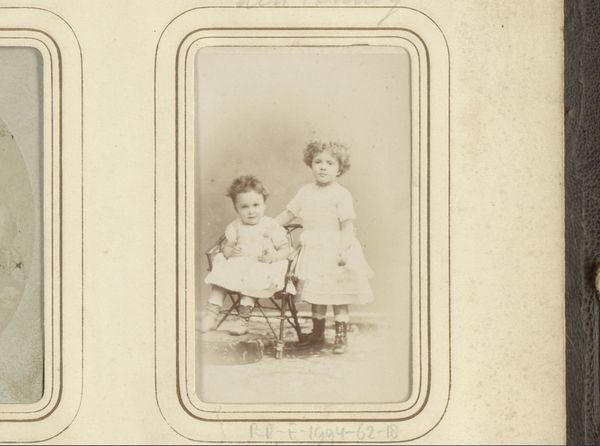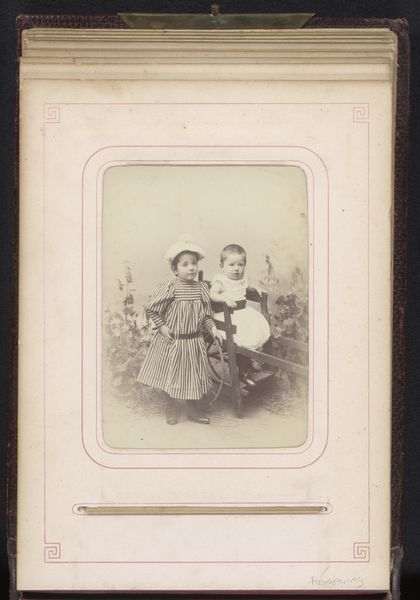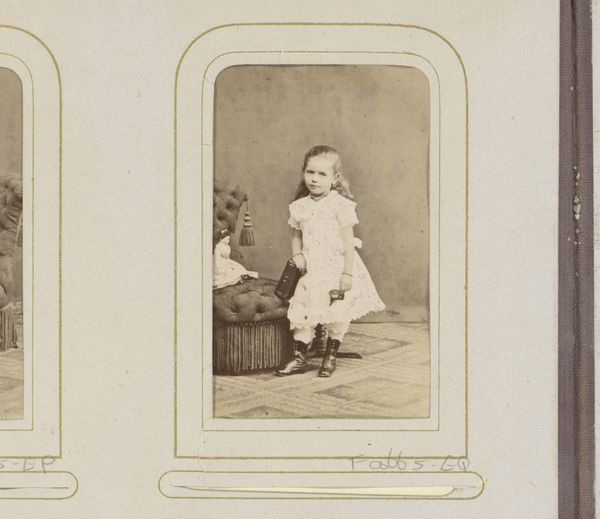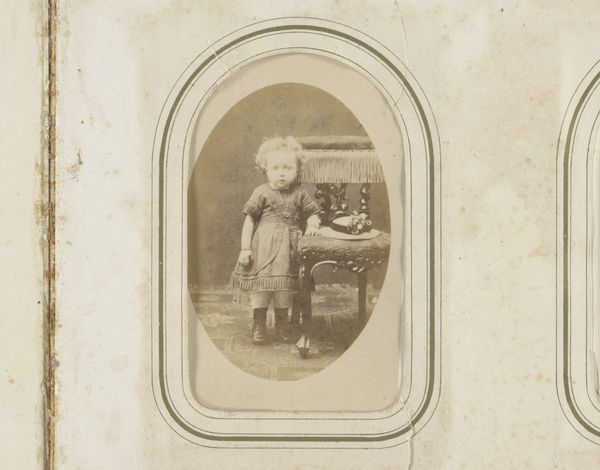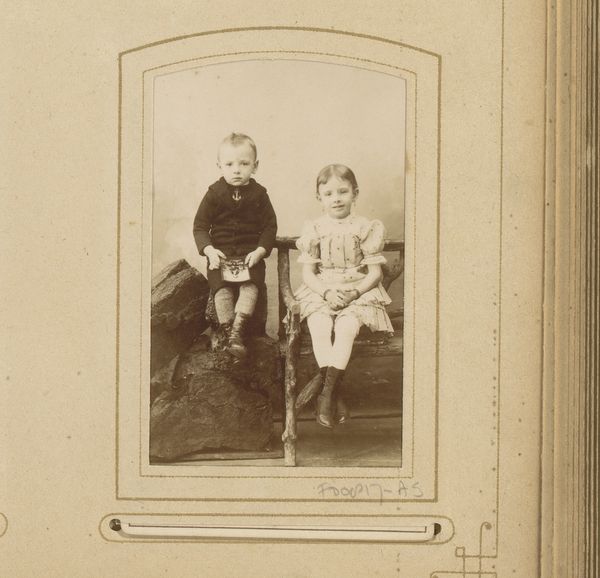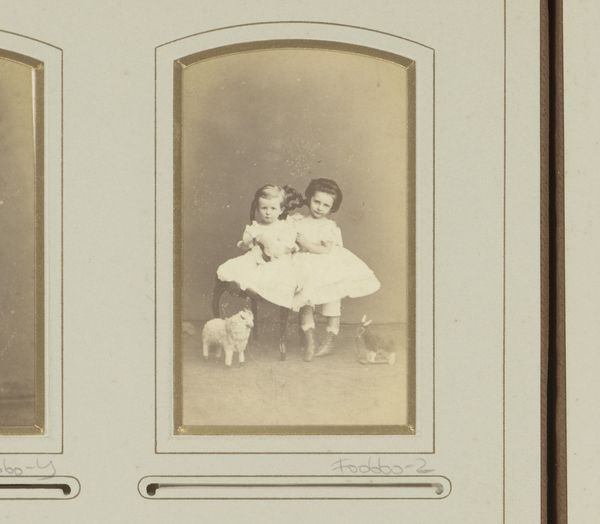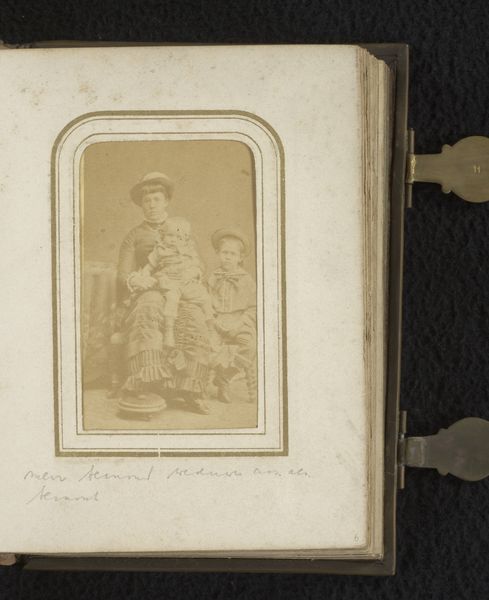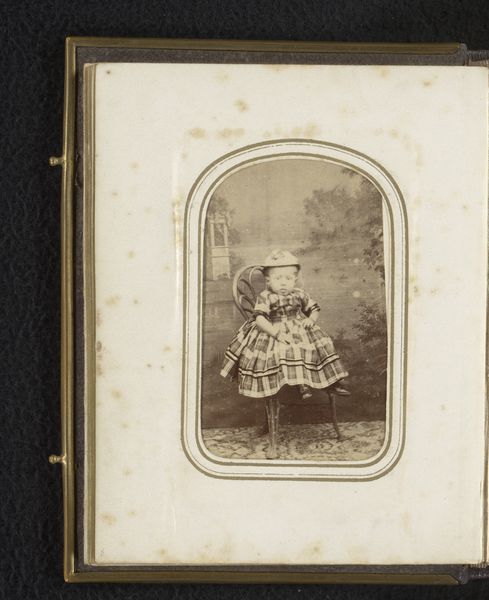
photography, gelatin-silver-print
#
portrait
#
photography
#
gelatin-silver-print
#
genre-painting
Dimensions: height 81 mm, width 52 mm
Copyright: Rijks Museum: Open Domain
Curator: Here we have a gelatin silver print titled "Portret van twee meisjes," which translates to "Portrait of Two Girls." It was created by Anton Wiedling sometime between 1870 and 1900. Editor: It’s a touching image, although somewhat melancholic. The subdued tones and formal poses give the sitters an air of gravity. The composition is balanced but the slight variations in the girl’s positions adds dynamism. Curator: Photographic portraiture in this era played a crucial role in shaping societal perceptions of family and childhood. How might this image have functioned within its original social context? Consider that this would have been around the time child labor laws started cropping up, a concern for public education became relevant, and discourses about childhood and gender began forming. Editor: Good point. Thinking intersectionally, the very act of commissioning this portrait implies a certain socio-economic standing. They are well-dressed and posed. It reflects idealized domesticity for the bourgeois while visually eliding their role in the industrialized, labor-heavy economic landscape. The seemingly innocent photograph normalizes structures that place them outside that struggle. The clothes they wear—those checked dresses—could that patterning suggest order imposed onto emerging identities, especially the shaping of girls? Curator: Interesting, because photographic studios themselves emerged as key cultural institutions during this period. Studios like Wiedling’s catered to a growing middle class eager to document their lives and present themselves according to evolving social norms. It allowed families to negotiate social standing with their public images. But what can this tell us beyond the studio and gallery context? What’s the legacy? Editor: Consider that even today, images shape public perceptions. How are childhood and family visually coded and framed, in everything from the marketing of products to political campaigns? This portrait is a good point of origin for critically assessing power structures as visually communicated to the masses. Curator: I agree. It reveals so much when we examine it not just as a record, but as an active participant in the social narratives of its time and ours. Editor: Yes, exactly, something seemingly benign can act as a touchstone for bigger conversations about access and representation.
Comments
No comments
Be the first to comment and join the conversation on the ultimate creative platform.
